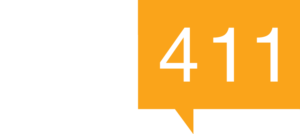“It was like some sort of sorcery had happened. As soon as the pressure was gone, I was more productive than I’ve been in a long time.” This quote from Marisa Jo Mayes, a social media influencer and co-founder of Spacetime Monotasking, captures the essence of Bare-Minimum Mondays. The emerging phenomenon, where employees do the bare minimum amount of work on Mondays to ease into the workweek, has taken root in many workplaces.
Understanding Bare-Minimum Mondays
Bare-Minimum Mondays is exactly how it sounds. On Mondays, employees plan to do the least amount of work necessary to complete their workday. While the name first garnered popularity on TikTok, the practice has a very real foothold in today’s workforce. According to a 2023 survey from B2B Reviews, approximately 25% of workers practice Bare-Minimum Mondays in some capacity.
Some of the common Bare-Minimum Monday tasks include:
- Beginning the workday later than usual (75%)
- Streaming shows while performing tasks (54%)
- Prioritizing “Monday must-dos” (28%)
- Planning out tasks for the rest of the week (21%).
For those concerned these practices may result in less productivity, you would be somewhat correct in this assumption. In fact, 1 in 4 workers also reported the least amount of productivity on Mondays compared to the rest of the week.
But is that really such a bad thing?
Why Is It Popular?
More often than not, employees in your company, and maybe even on your team experience anxiety about starting the work week. A 2018 survey reveals that 80% of American workers experience this fear now known as the Sunday Scaries.
With the dread of numerous tasks looming over employees just as they were attempting to reset their work-life balance over the weekend, Bare-Minimum Mondays has risen as a way to mitigate this weekly anxiety.
Workers implementing this method may not be in the right headspace to conquer the tasks that are more mentally taxing. These employees may prioritize work they can complete quickly and easily. Those who choose to push to meet full productivity at the start of the week can end up feeling worse.
Stress that isn’t managed properly can build up over time, eventually leading to burnout and causing another whole host of problems that HR leaders have been trying to avoid.
Quiet Quitting and Rage Applying
Burnout is known to lead to both a decrease in productivity and an increase in employee turnover.
From these high levels of burnout, we can start to see more well-known viral TikTok trends manifest in the workplace.
Many HR professionals are well aware of Quiet Quitting after it gained popularity in 2022. It’s similar to Bare-Minimum Mondays as it refers to when employees avoid performing extra duties to complete only the minimum work requirements when feeling overworked or stressed.
The rising popularity of these methods represents a clear shift in the way workers prioritize their mental health and a healthy work-life balance. If HR leaders don’t push to address any potential stressors, then more critical issues could arise.
The longer we avoid addressing the root of the problem, the more we risk losing employees during a global talent shortage. Rage Applying, applying to multiple jobs after being frustrated with their current job, is another trend that we mustn’t ignore. If so, companies may experience a sudden loss of multiple employees after they meet their wits end at work. To put this concept into a deeper perspective, a recent study reports that 90% of respondents rage applied in the previous six months. From the same study, 88% reported burnout, depression, and heightened levels of anxiety from their job.
With this in mind, HR leaders must acknowledge the next steps for mitigation to take if they feel Quiet Quitting or Rage Applying are present in their workplace.
Finding Balance and Productivity
Every team leader would like to witness the maximum levels of productivity. Yet, to expect it all the time can do more harm than good. Workers are looking for a balance in their work life, and for some that falls in line with Bare-Minimum Mondays. Unlike Quiet Quitting, Bare-Minimum Mondays does leave room to increase productivity levels and go above and beyond. While there are some potential downsides, such as delayed projects and sometimes a disruption in team dynamics, the underlying concept is meant to be helpful.
While encouraging the “bare minimum” doesn’t sit well with most leaders, a change doesn’t have to be that drastic.
A 2016 study on flexible work programs showed that workers experienced lower levels of burnout and higher levels of job satisfaction. These workers also experienced higher productivity levels during the week.
This isn’t to say that HR teams must implement Bare-Minimum Mondays to retain employees. If anything, this strategy is a sign that more employees will thrive under arrangements that allow them to have a voice in how they get their work done.
Embracing the Flexible Workplace
Bare-Minimum Mondays, Quiet Quitting, and Rage Applying are all symptomatic of a broader shift in how employees view their work and personal lives. These trends underscore the urgent need for companies to address employee well-being, promote open communication, and consider flexible work arrangements. By recognizing and responding to these underlying issues, HR leaders can foster a more supportive and productive workplace, ultimately benefiting both employees and the organization.






